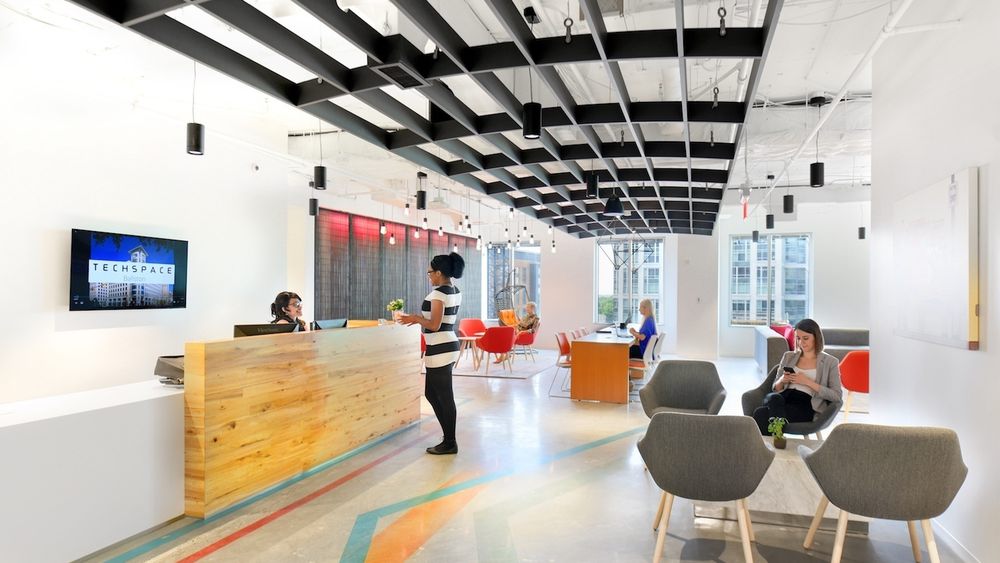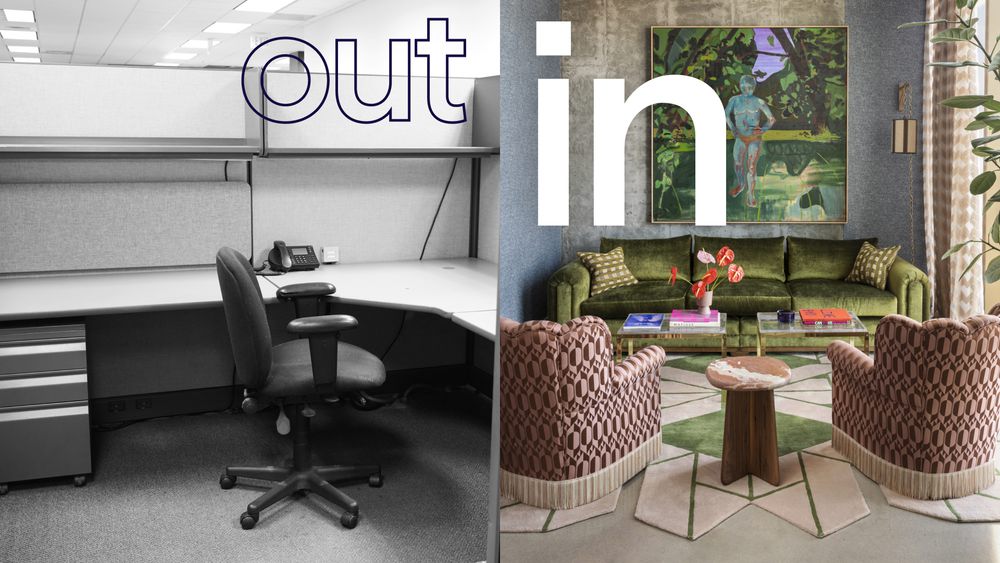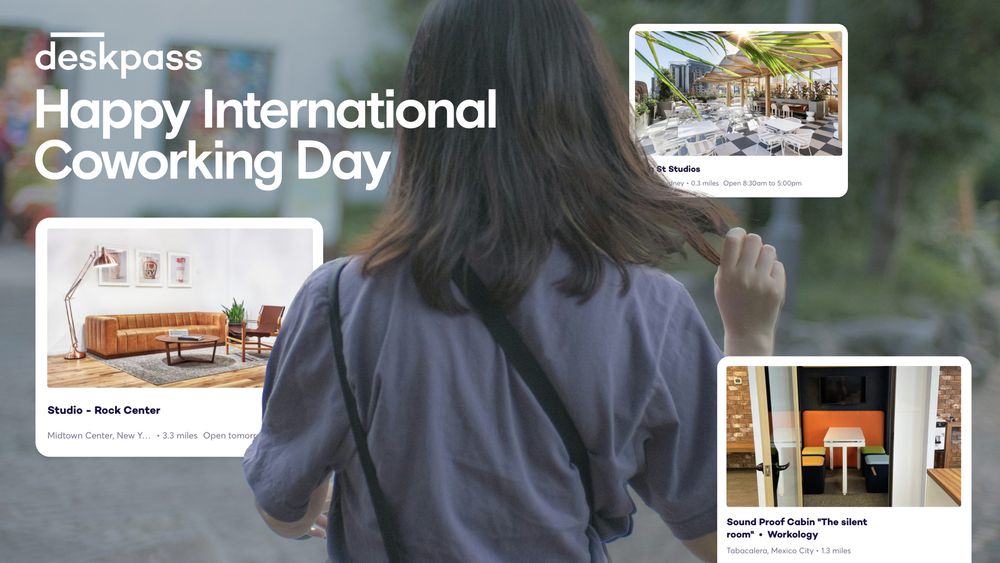What will it take for coworking spaces to be able to reopen and operate safely, given their shared environments?
What will it take for people to feel safe and comfortable going into coworking spaces?
Taking on the challenge to answer these 2 questions, I’m bringing my 3-sided perspective as someone who is:
- A coworking space owner
- The point of contact for all 500+ coworking spaces on our Deskpass network
- A 100% remote worker that went to coworking spaces daily prior to this crisis
After spending weeks reviewing the information and advice provided by leading health organizations, workspace industry publications, national news, and global real estate companies, I’ve compiled a list of what I believe to be the necessary action for workspaces to take in order to reopen safely, and convey to coworkers why it’s safe to return to the workplace and how they’ll be protected.
Prior to reopening, workspaces should have a comprehensive plan that serves as an operational playbook for employees, but is also available for review by members. The 8 components below have quick summaries to provide an easy overview, with links to in-depth resources and guides.
Employee Education
Employees must be trained in advance of reopening and fully-prepared to manage revised operations. Employees will need to know how to interact with members safely and empathetically, how to clean and disinfect throughout the day as needed, and how to take action in emergency situations.
A great place to start is by having each employee read OSHA’s Guidance on Preparing Workplaces for COVID-19.
Member & Non Member Communication
For a long time, people will be seeking health and safety information before going into any public place. Spaces should make it easy for people to find answers to frequently asked questions, and ensure they are responding in a timely manner across all their contact channels.
By having a dedicated page on their website, spaces can direct people to 1 easy-to-find page and then update their social media, voicemail, and public-facing signage to direct people to that page.
There should also be a section of what people need to know on their first visit, and what will be required of them once they start coming in regularly. Virtual tours, online registration, and touchless onboarding will be an option so new members can join without contact if desired.
On-Site Signage
Coworking spaces were already known for their helpful signage to help people navigate shared amenities (ex: how to actually use that fancy espresso machine), but going forward they’ll need to convey exactly where people should be (and shouldn’t be), what they can use on-site and how to sanitize shared items accordingly.
Additionally, expect spaces to have markings on the floor such as arrows to direct the flow of traffic in just one direction, to indicate safe distances while waiting to get coffee and filtered water, or even where to stand when waiting for the elevator.
Example of a sign created by Second Shift in Chicago:
Specialized Disinfection Services
The way spaces were cleaning prior to this crisis will not suffice. Simply put: disinfecting is different from cleaning. Spaces will hire specialized companies for deep-cleaning and disinfection services, but they’ll still need to have employees trained on the proper cleaning and disinfecting techniques which are clearly and easily explained on this page of the CDC website.
Visible Cleaning & Disinfecting Schedule
Cleaning services happen at night and on weekends, so people won’t know if and when they’re occurring. By openly displaying their cleaning and disinfecting schedules, spaces can provide assurance that these services are occurring and prevent management being asked the same questions repeatedly. If people do not see these kinds of health and safety policies and schedules clearly posted on-site, they should request that they be displayed.
Physical Restructuring (6 Feet Office)
The term ‘6 feet distance’ has become so ingrained in all of us, that when we adhere to this rule we feel assured that we’re doing something right. Capitalizing on that guarantee, real estate company Cushman & Wakefield acted quickly and envisioned what the “6 Feet Office” would look like and how it would function via their “Safe Six” elements. This is not the only way a space may restructure their physical environment, but it certainly provides a good frame of reference. Learn the Safe Six here, and make sure to watch their 2 minute video.
Another signage example from Second Shift in Chicago:
Adjusted Daily Operations
The community-focus of most coworking spaces will be challenged, but it’s not impossible to keep members connected and in communication with each other safely through the use of strategic, adjusted daily operations. Community Manager roles will evolve into being health and safety focused at all times, so expect a reduction of in-person events but an increase in online communication and virtual events. Coworkers may all be on-site and at a safe distance, but communicating online instead of the usual beloved stop-and-chats.
When it comes to operations in a COVID-minded world, everything must be reassessed before coworking spaces reopen: HVAC and ventilation, kitchen maneuvering, mail handling, safe usage of meeting rooms and phone booths, and so much more. The most comprehensive guide I’ve seen thus far is Cushman & Wakefield’s Recovery Readiness.
Contingency Plan & Action Steps
Having an emergency plan for employees and members to follow will be crucial as we attempt to navigate the unknown together, because unfortunately issues will occur. As we’ve seen, when a crisis happens and there are no authoritative instructions or a plan to follow, panic ensues.
Spaces should have an easy-to-navigate plan prior to reopening, that anticipates the issues and how to handle each one swiftly. For example: a person on-site is exhibiting symptoms, a recent visitor is now confirmed to have COVID, or your community manager gets sick.
Aon, a global risk mitigation services company addresses these emergency responses in pages 3-6 of their Response Planning Tool Kit, and emergency response is also addressed in Section 4 of the WHO’s Getting Your Workplace Ready guide.
Summary
Coworking operations must change in order to survive, and if they can weather this storm they will be rewarded with the influx of people seeking coworking options.
Companies will not be bringing all employees back to the workspace at the same time. There will be a tiered “re-entry” approach (learn more in JLL’s webinar) and it is logical to expect employees working remote for 6-12 months, or more. Coworking spaces that have adapted to this new reality will be a safe bet for employees looking to escape the mundane of working from home, and many companies have already expressed plans in reducing their own office space in exchange for remote work options.
Additional Resources
- Global Workspace Association (GWA): Business Continuity Template, and Guide to Preparing Your Flexible Office Space
- CBRE: Reopening The World’s Workplaces
- Out Of Office: Business Unusual – COVID-19 Impact on the Workplace of the Future
- GCUC: Virtual Conference Takeaways
This post is written by Deskpass Co-Founder and Chief Community Officer, Nicole Vasquez.



